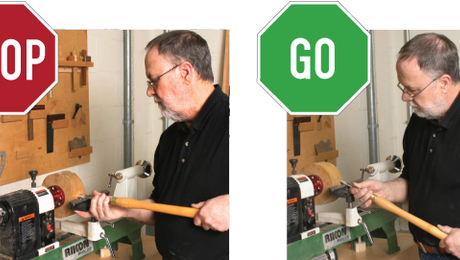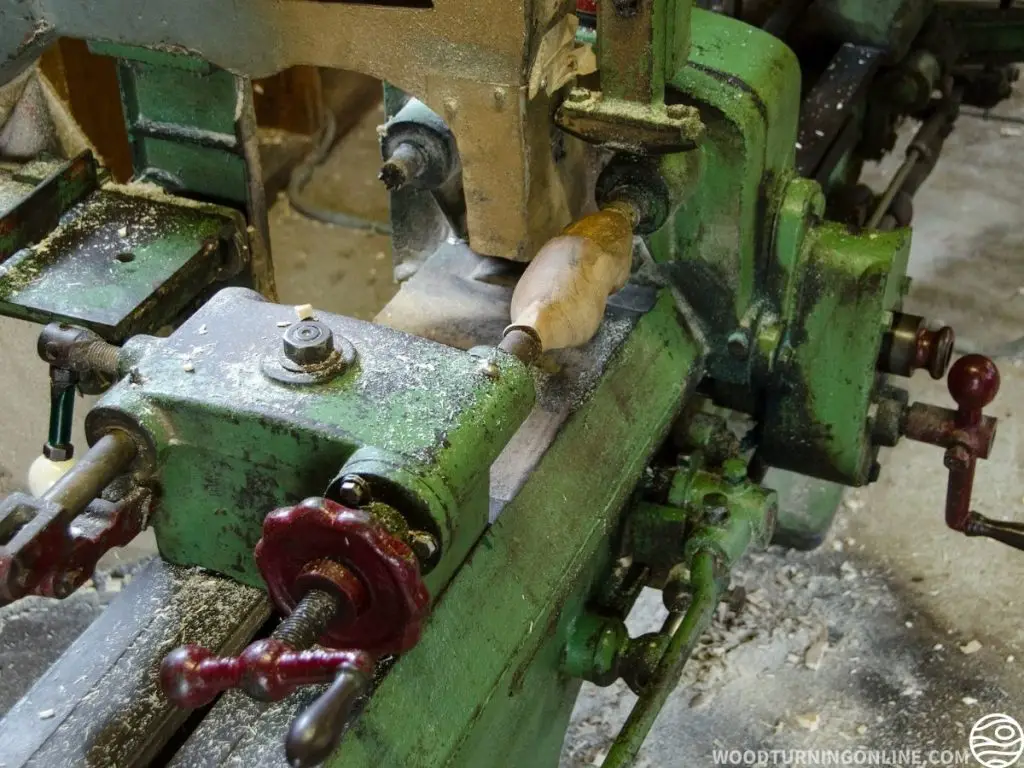Is wood turning dangerous? If you’re curious about the potential risks and hazards of this popular craft, you’ve come to the right place. Wood turning can be an exciting and creative hobby, but it’s important to understand the safety considerations involved. In this article, we’ll explore the potential dangers of wood turning and provide tips on how to stay safe while enjoying this rewarding activity. So, let’s dive in and learn more about the world of wood turning and the precautions you need to take.
Wood turning, like any other craft, has its own set of risks and hazards. However, with proper safety measures and precautions, you can minimize the dangers and enjoy this hobby without worry. It’s crucial to use the right safety equipment, such as goggles, face shields, and protective clothing, to protect yourself from flying wood chips and debris. Additionally, understanding the proper techniques and procedures, like how to hold and maneuver the tools, can significantly reduce the risk of accidents.
While accidents can happen, following safety guidelines can greatly mitigate the risks involved in wood turning. Always maintain a clean and organized workspace, ensuring that there are no obstacles or tripping hazards around your lathe. It’s also important to use sharp blades and maintain them properly to avoid any unpredictable movements or kickbacks. So, whether you’re a beginner or an experienced wood turner, adopting safe practices is essential for a fun and injury-free experience.
So, is wood turning dangerous? Like any craft, it comes with its own risks, but by following safety guidelines and using the proper protective equipment, you can enjoy this hobby while minimizing the dangers. Keep reading to discover more about the world of wood turning and how to stay safe while exploring your creativity with wood. Let’s get started!

Is Wood Turning Dangerous? Exploring the Safety of Woodworking
Welcome to our in-depth exploration of wood turning and its safety. In this article, we will delve into the potential risks associated with wood turning and provide you with valuable information to ensure safe practices. Wood turning is a popular craft that involves shaping wood into various decorative and functional items using a lathe. While it can be a fulfilling and rewarding hobby, it is important to understand the potential dangers and take necessary precautions. Let’s dive into the world of wood turning safety.
Understanding Wood Turning and Its Potential Risks
Wood turning is a technique that involves rotating a piece of wood on a lathe and shaping it using various cutting tools. It allows craftsmen and hobbyists to create intricate designs, bowls, vases, and other objects from a block of wood.
However, like any woodworking activity, there are inherent risks involved in wood turning. These risks primarily arise from working with sharp tools, high-speed rotations, and flying debris. It is crucial to be aware of these risks and take appropriate measures to ensure safety in your wood turning endeavors.
The Importance of Protective Gear
When undertaking wood turning, it is vital to prioritize your safety by wearing appropriate protective gear. The following are essential items to consider:
- Safety goggles: Protecting your eyes from flying wood chips and debris is crucial. Safety goggles should fit snugly and provide sufficient coverage.
- Face shield: A face shield adds an extra layer of protection by shielding your entire face from large wood fragments or wood chunks that can be thrown from the lathe.
- Dust mask: Breathing in fine wood particles and dust can be harmful to your respiratory system. Wearing a dust mask or respirator will help protect your lungs from these airborne particles.
- Ear protection: Wood turning can be noisy, with the sound of the lathe and cutting tools. Wearing earplugs or earmuffs will help safeguard your hearing from prolonged exposure to loud noises.
Investing in quality protective gear can significantly reduce the risk of injuries during wood turning. It is imperative to wear them consistently and correctly every time you engage in this craft.
Proper Handling and Technique
Aside from protective gear, adopting proper handling techniques is essential for minimizing the risk of accidents and injuries. Here are some key aspects to consider:
- Tool handling: Always hold your cutting tools firmly and securely. Maintain a proper grip and angle to prevent slipping.
- Workpiece positioning: Be conscious of the position of your hands and fingers when handling the workpiece. Keep them well clear of the cutting tools and rotating wood.
- Tool selection: Ensure that you are using appropriate tools for the specific task. Different tools are designed for different purposes, and using the wrong tool can lead to accidents.
- Sharp tools: Maintain sharpness in your cutting tools. Dull tools require more pressure to achieve the desired result, increasing the likelihood of accidents. Regularly sharpen your tools or replace them when necessary.
By adhering to proper handling techniques and consistently practicing safety measures, you can significantly mitigate the risks associated with wood turning.
Workspace Setup and Maintenance
Your workspace plays a crucial role in ensuring safety during wood turning. Here are some key aspects to consider:
- Clear workspace: Keep your work area clean and clutter-free. Remove any unnecessary objects or debris that may obstruct your movement or pose a safety hazard.
- Stable lathe: Ensure that your lathe is securely anchored to a stable surface to prevent any wobbling or vibrations that could affect your control over the wood piece.
- Well-lit area: Proper lighting is essential for enhancing visibility and reducing the chances of making inaccurate cuts. Make sure your workspace is well-illuminated.
- Proper ventilation: Wood dust and particles can accumulate in the air, causing respiratory problems. Ensure that your workspace has adequate ventilation to minimize the inhalation of airborne particles.
By maintaining a well-organized and safe workspace, you create an environment that promotes responsible wood turning practices and minimizes potential risks.
Additional Measures for Safe Wood Turning
While the above aspects cover the core safety considerations in wood turning, here are a few additional measures to ensure safe and enjoyable woodwork:
Wood Selection
Choosing the right type of wood is a crucial aspect of wood turning safety. Some woods contain allergens or toxic substances that can cause skin irritations or respiratory issues. Research and familiarize yourself with different wood types to understand their properties and potential risks. Always wear gloves when handling exotic or allergenic woods.
Education and Training
Acquiring adequate knowledge about wood turning techniques and safety practices is paramount. Consider attending workshops, classes, or joining local woodturning clubs to learn from experienced turners. Additionally, online resources, books, and tutorials can provide valuable insights into safe wood turning practices.
Regular Maintenance and Inspection
Keep your lathe and cutting tools properly maintained. Regularly inspect them for any signs of wear, damage, or malfunction. Replace any faulty parts or tools to ensure optimal performance and safety during wood turning.
In conclusion, wood turning can be a safe and enjoyable activity when proper precautions are taken. By diligently following safety guidelines, wearing appropriate protective gear, practicing proper handling techniques, and maintaining a well-organized workspace, you can minimize the potential dangers associated with wood turning. Always prioritize your safety and never compromise on precautions. Happy wood turning!
Key Takeaways: Is Wood Turning Dangerous?
- Wood turning can be dangerous if proper safety precautions are not taken.
- Always wear protective gear like gloves, goggles, and a face shield when wood turning.
- Make sure to use sharp tools and keep them properly maintained to prevent accidents.
- Take your time and work at a comfortable pace to avoid mistakes and injury.
- Attend woodturning classes or seek guidance from experienced woodturners to learn proper techniques and safety measures.
Frequently Asked Questions
Welcome to our FAQ section on wood turning safety. Here, we address common concerns and provide answers to keep you safe while indulging in this craft. Read on to find out more!
1. Are there any specific dangers associated with wood turning?
Wood turning, like any other activity, has its inherent risks. The main hazards include the potential for cuts from sharp tools, flying debris, and respiratory issues from wood dust. However, by following proper safety precautions, these risks can be greatly reduced. It’s important to wear appropriate safety gear, such as goggles, gloves, and a dust mask, and to practice good tool control.
Additionally, it is essential to maintain a clean and organized workspace, as clutter can contribute to accidents. By being aware of these potential dangers and taking necessary precautions, you can enjoy wood turning safely.
2. How can I protect myself from injuries while wood turning?
The safety of woodturning largely depends on how well you safeguard yourself. Firstly, wear protective goggles to protect your eyes from flying wood chips or dust. Secondly, make sure to use a dust mask or respirator to prevent inhalation of wood particles. The use of gloves is recommended to shield your hands and provide a better grip, but be cautious with loose clothing or jewelry that might get entangled in the spinning wood.
Additionally, it’s crucial to follow proper tool usage techniques. Always keep your tools sharp and maintain a good grip on them, using appropriate tool rests when necessary. By exercising caution, wearing the correct protective gear, and practicing good technique, you can minimize the risk of injuries.
3. Should I be concerned about the dust generated while wood turning?
Wood dust can pose respiratory risks, particularly when inhaled over a long period of time. The fine particles produced during wood turning can irritate the respiratory tract and worsen conditions such as asthma and allergies. To mitigate these risks, it’s important to always use a dust collection system or a vacuum specifically designed for wood dust extraction.
Additionally, wearing a dust mask or respirator is recommended, as it helps filter out wood particles, protecting your airways. Ventilation is another key aspect to consider; ensure your workshop is well-ventilated to minimize the concentration of wood dust in the air. By taking these precautions, you can reduce the potential health hazards associated with wood dust.
4. Is it necessary to take woodworking classes or seek professional guidance to ensure safety?
While formal woodworking classes or professional guidance can provide valuable knowledge and hands-on experience, they are not absolutely necessary to ensure safety in wood turning. There are various resources available, such as books, online tutorials, and videos, that can teach you the basics and guide you through proper safety practices.
However, it’s crucial to thoroughly educate yourself on safety measures specific to woodturning. Familiarize yourself with the proper use of tools, safety gear, and techniques to minimize risks. Practice in a controlled environment, start with simpler projects, and gradually progress as your skills and knowledge grow. Always remember to prioritize safety and exercise caution during the entire woodturning process.
5. Can children or beginners safely engage in wood turning?
With proper guidance and supervision, children and beginners can safely enjoy wood turning. The key is to ensure that young children are not left unattended and that they are taught proper safety measures from the start. Provide them with appropriate safety gear, instruct them on safe tool usage, and emphasize the importance of being aware of their surroundings.
For beginners, it’s advisable to start with simpler projects and gradually progress to more complex ones. Take your time to develop good technique and always prioritize safety. Remember, wood turning can be a rewarding and enjoyable activity as long as proper precautions are taken and safety is a top priority.

WARNING! Woodturning Can Be DANGEROUS To Your Health! – Wood Turning
Summary
Turning wood can be dangerous if proper safety precautions are not followed.
It is important to always wear protective gear, use sharp tools, and work in a well-ventilated area. Remember to take breaks and stay focused to prevent accidents. Woodturning can be a fun and fulfilling hobby, as long as safety is a priority.
